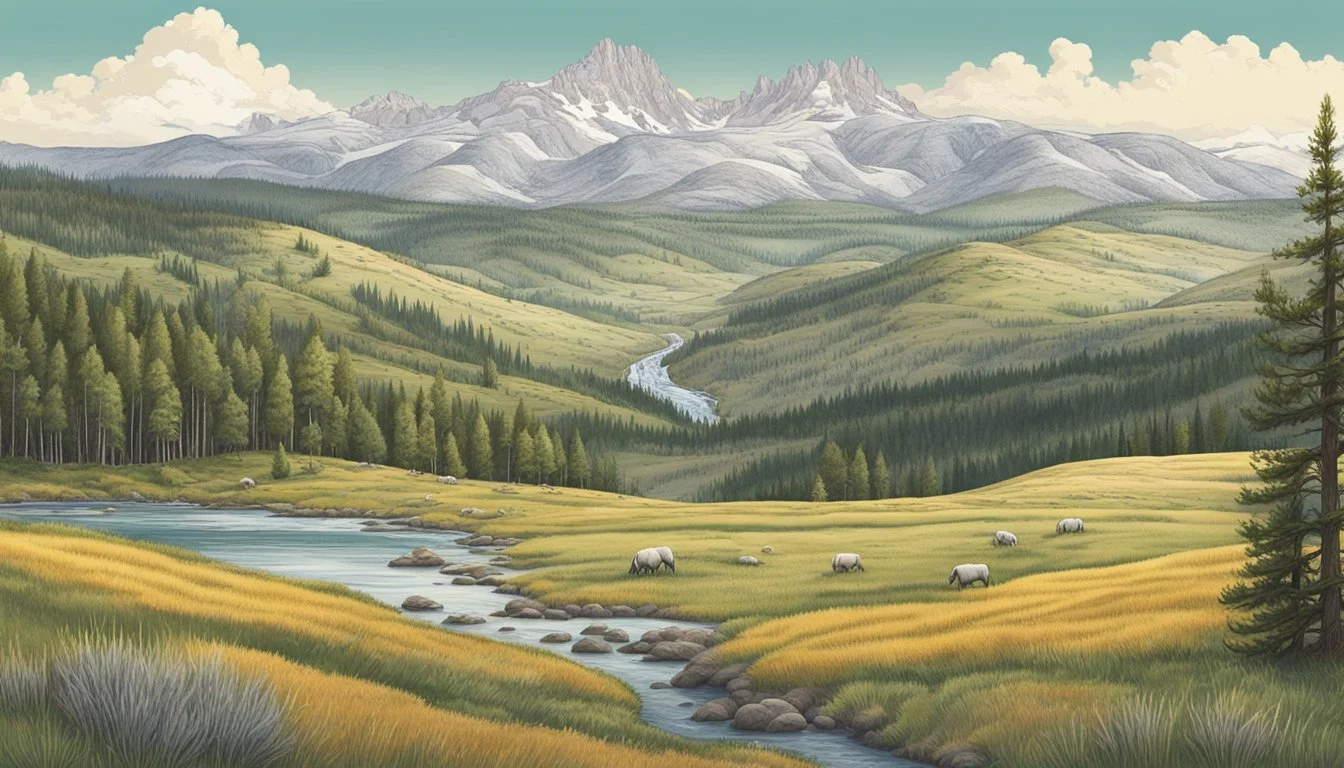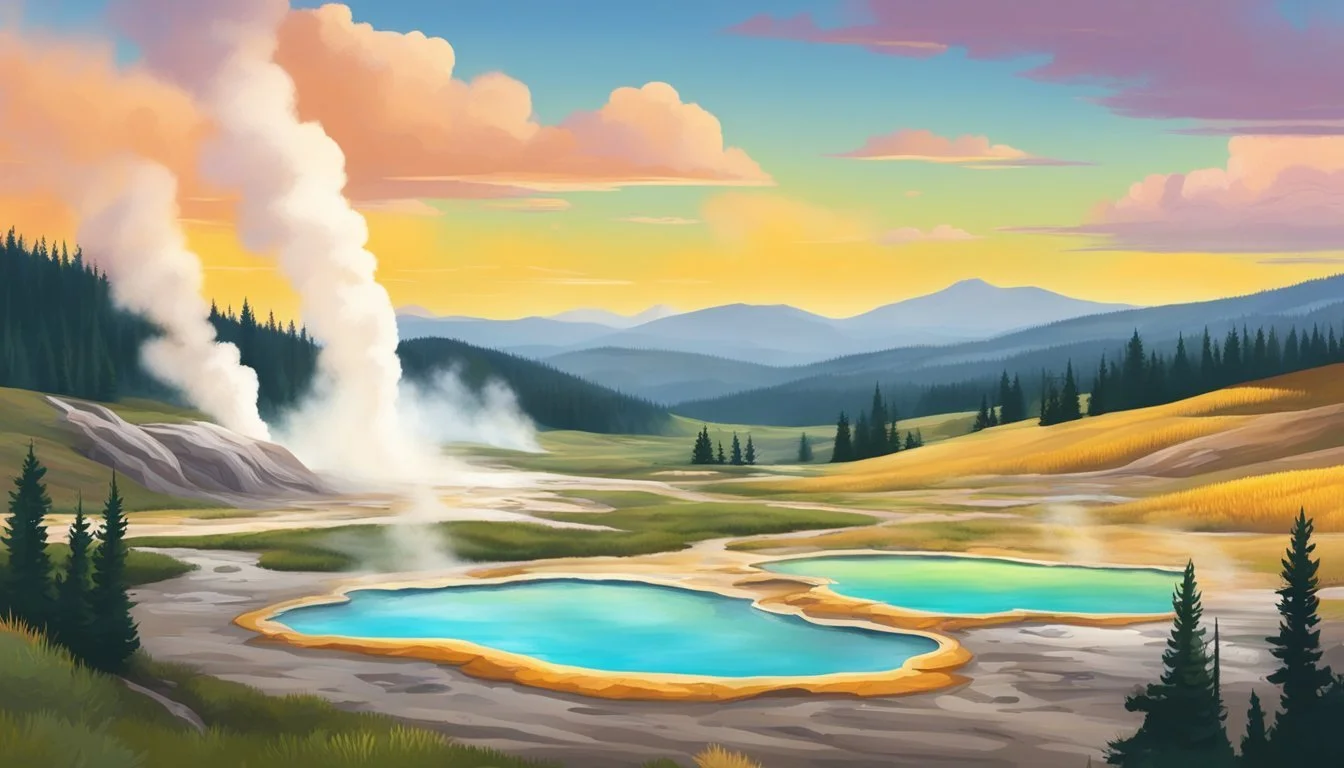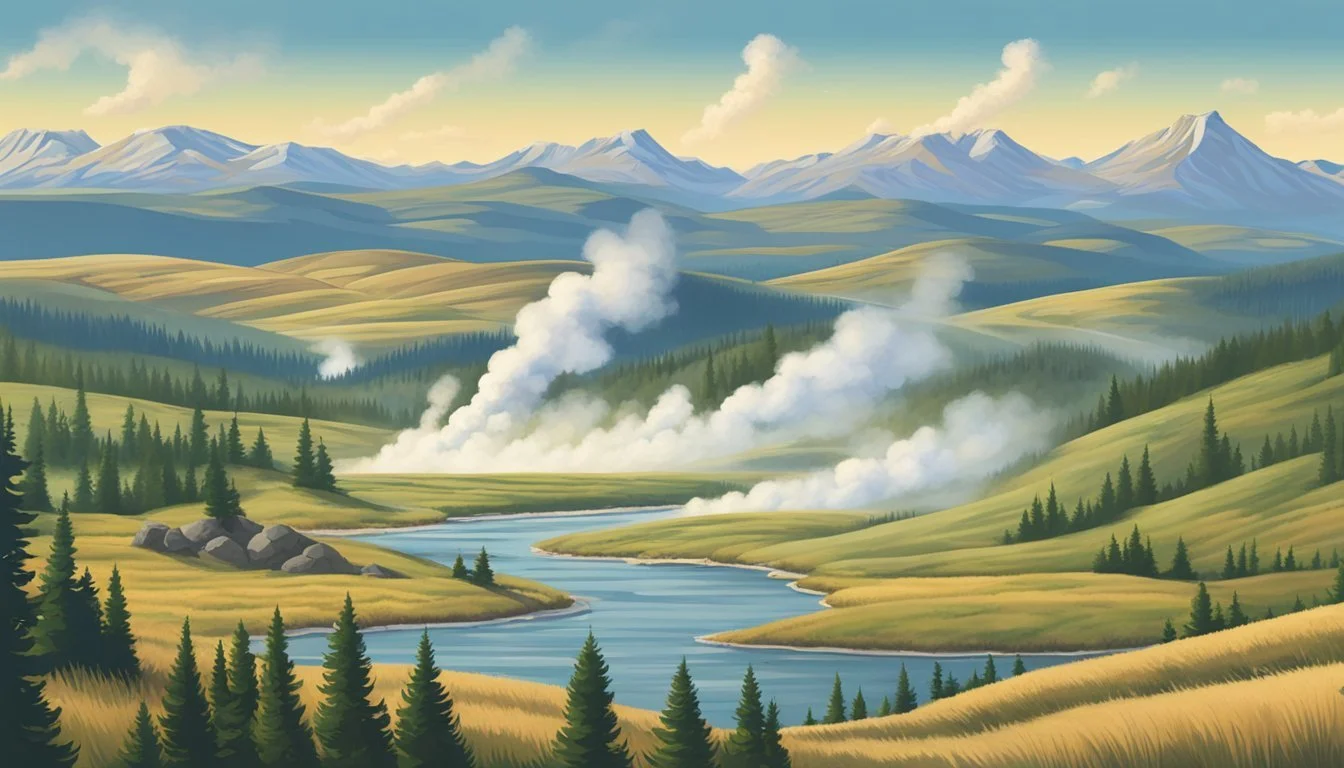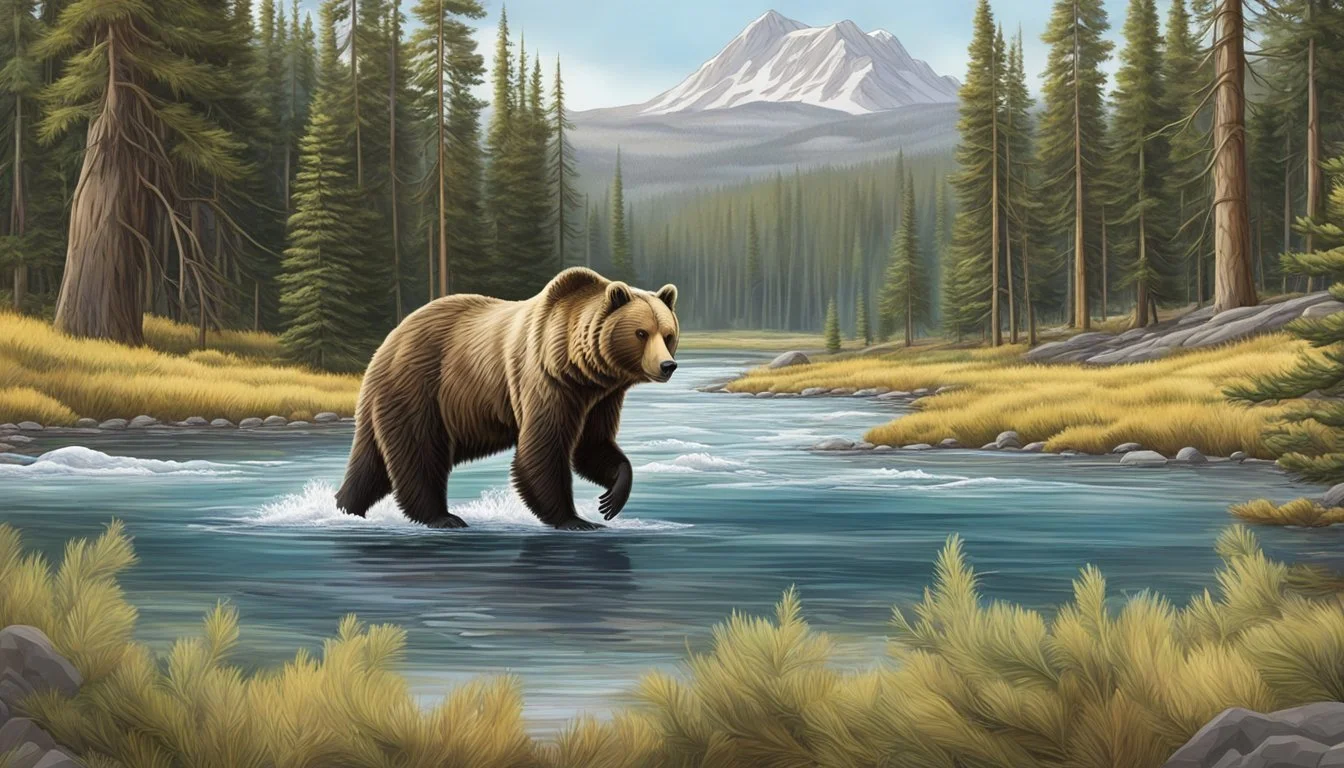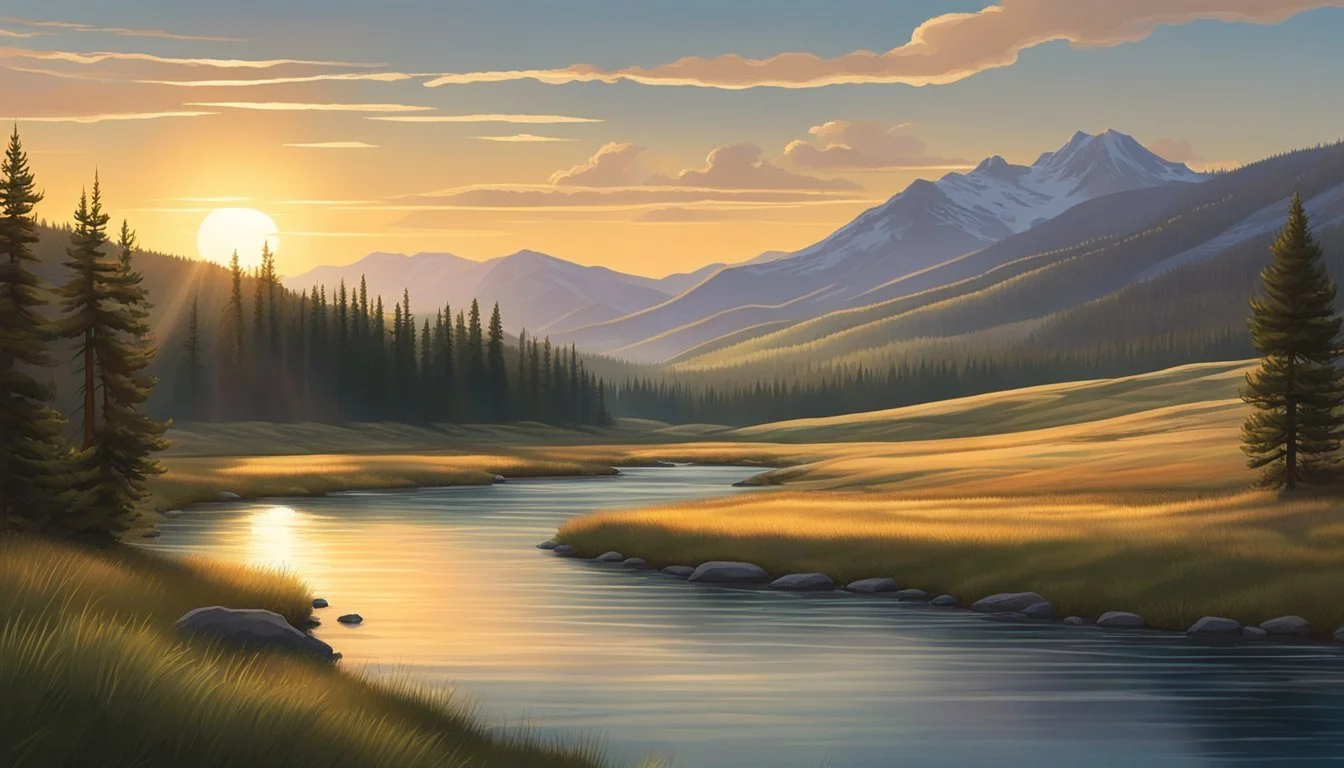Nature as a Character: The Montana Landscape in Yellowstone
Exploring the Scenic Wilderness
Montana's breathtaking landscapes play a pivotal role in the television series Yellowstone, elevating the setting from mere backdrop to a vital character in its own right. The show's creators masterfully capture the raw beauty of Montana's wilderness, incorporating sweeping vistas, rugged terrain, and pristine rivers into the fabric of the narrative.
The vast Montana wilderness molds the personalities of Yellowstone's characters, shaping their motivations and influencing their decisions throughout the series. This intimate connection between the land and its inhabitants reflects the real-life relationship many Montanans have with their natural surroundings.
Yellowstone's portrayal of Montana's landscape goes beyond visual spectacle, serving as a powerful storytelling tool. The untamed wilderness becomes a symbol of freedom, danger, and opportunity, mirroring the complex dynamics at play in the show's plot. By showcasing Montana's natural beauty with such authenticity, Yellowstone offers viewers a glimpse into the awe-inspiring world that exists just beyond the borders of Yellowstone National Park.
Yellowstone's Vast Tapestry
Yellowstone's landscape encompasses a diverse and interconnected natural world. Its expansive terrain forms a living canvas that shapes the characters and stories within the show.
Greater Yellowstone Ecosystem
The Greater Yellowstone Ecosystem spans 22 million acres across Wyoming, Montana, and Idaho. This vast region includes Yellowstone National Park at its core. It's one of the largest nearly intact temperate ecosystems on Earth.
The ecosystem supports a rich variety of wildlife, including grizzly bears, wolves, and bison. These animals often feature prominently in the show's storylines. Their presence underscores the wildness of the landscape.
Rivers and forests form vital corridors for animal migration. The Yellowstone River, the longest undammed river in the lower 48 states, plays a crucial role in this ecosystem. Its waters sustain both wildlife and the surrounding communities.
Diverse Ecosystems
Yellowstone's landscape encompasses a range of ecosystems, each contributing to the show's visual richness. Alpine meadows burst with wildflowers in summer, providing grazing grounds for elk and bison.
Dense forests of lodgepole pine and Douglas fir cover much of the region. These woodlands offer shelter to wildlife and create a sense of mystery in many scenes.
Geothermal features add another layer of uniqueness. Steaming hot springs and erupting geysers serve as dramatic backdrops. They remind viewers of the powerful forces at work beneath the surface.
Wetlands and riparian areas along rivers support diverse plant and animal life. These lush areas contrast with the drier sagebrush steppe, showcasing the region's ecological diversity.
Big Sky Country and Rugged Landscape
Montana's nickname "Big Sky Country" is well-represented in Yellowstone. Vast open spaces and expansive horizons create a sense of limitless possibility. This backdrop emphasizes the characters' struggles and triumphs against nature's grandeur.
Rugged mountain ranges dominate the landscape. The Absaroka, Gallatin, and Madison ranges form a stunning backdrop. Their jagged peaks and deep valleys shape the show's visual aesthetic.
Rocky outcrops and canyons add texture to the terrain. These features create natural obstacles and hiding places, often used in dramatic plot points.
The changing seasons dramatically transform the landscape. Snow-covered winters give way to vibrant springs, showcasing nature's cycles. This seasonal flux mirrors the evolving narratives and character arcs within the show.
The Living Portrait of Nature
Montana's landscape in Yellowstone showcases nature's vibrant artistry. From diverse wildlife to stunning geological features, the park presents a living canvas of natural wonders.
Wildlife and Flora
Yellowstone teems with an array of animal species. Bison roam freely across vast grasslands, while elk graze in verdant meadows. Wolves prowl through forests, their howls echoing across valleys. Grizzly bears forage for berries and fish in crystal-clear streams.
The park's plant life is equally diverse. Lodgepole pines dominate forested areas, their straight trunks reaching skyward. Colorful wildflowers carpet alpine meadows in summer, including vibrant purple lupines and golden balsamroot.
Fire plays a crucial role in Yellowstone's ecosystem. Periodic wildfires clear deadwood and stimulate new growth, ensuring the landscape's continual renewal.
Hydrothermal Wonders
Yellowstone's geothermal features create an otherworldly landscape. Old Faithful Geyser erupts regularly, sending plumes of steaming water into the air. Visitors gather to witness this spectacular display of nature's power.
The Grand Prismatic Spring dazzles with its rainbow-hued waters. Microorganisms thrive in the spring's extreme temperatures, creating vivid bands of color around its edges.
Bubbling mud pots and hissing fumaroles dot the park, evidence of the intense heat and pressure beneath the Earth's surface.
Geological Marvels
Yellowstone's dramatic terrain showcases eons of geological activity. The Grand Canyon of the Yellowstone reveals layered rock formations, carved by the powerful Yellowstone River.
Mammoth Hot Springs features terraced limestone formations. Mineral-rich water flows over these terraces, creating intricate patterns and textures.
The Lamar Valley, known as America's Serengeti, exemplifies the park's expansive beauty. Rolling hills and winding rivers create a picturesque backdrop for wildlife viewing.
Massive petrified trees stand as silent witnesses to ancient volcanic eruptions, their stone trunks preserving a snapshot of Yellowstone's prehistoric forests.
Yellowstone as a Filming Icon
Yellowstone's cinematic portrayal of Montana's landscapes has elevated the show to iconic status in the world of television production. The series expertly blends stunning visuals with compelling storytelling, creating an immersive experience for viewers.
Cinematic Depiction of Montana
Montana's diverse terrain serves as a captivating backdrop for Yellowstone. The show's cinematography showcases sweeping vistas of rolling meadows, rugged mountains, and pristine forests. Wide-angle lenses capture the expansive nature of the landscape, emphasizing its grandeur and significance to the narrative.
Dutton Ranch, the fictional centerpiece of the series, is brought to life through careful location scouting and set design. The production team meticulously selects filming spots that embody the essence of Montana's natural beauty.
Kevin Costner's character, John Dutton, is often framed against these awe-inspiring landscapes, visually reinforcing his deep connection to the land.
Filming Techniques and Technology
Yellowstone employs cutting-edge filming techniques to capture Montana's beauty in stunning detail. High-resolution cameras mounted on drones provide breathtaking aerial shots of the terrain, offering viewers a bird's-eye perspective of the vast wilderness.
The production team uses stabilizers and advanced tripod systems to achieve smooth, cinematic shots even in challenging outdoor conditions. This technology allows for seamless transitions between wide landscape shots and intimate character moments.
CGI is used sparingly, primarily to enhance existing scenery or create specific weather conditions. This approach maintains the show's commitment to authenticity while allowing for creative storytelling.
Authenticity in Storytelling
Yellowstone's creators prioritize realism in their depiction of Montana life. The show films extensively on location, including areas near Yellowstone National Park, to capture genuine local atmospheres and natural lighting conditions.
Local extras and real-world locations add authenticity to scenes set in towns and communities. This attention to detail extends to the portrayal of ranching activities, with actors receiving training in horsemanship and cattle handling.
The production team consults with local experts to ensure accurate representation of Montana's ecosystems, wildlife, and cultural nuances. This commitment to authenticity resonates with viewers and contributes to Yellowstone's status as a filming icon.
Cultural and Historical Context
Montana's landscape in Yellowstone is steeped in rich cultural heritage and historical significance. The region's natural beauty has shaped human experiences and interactions for millennia.
Indigenous Perspectives
Native American tribes have inhabited the Yellowstone area for over 11,000 years. The land holds deep spiritual and cultural importance for many indigenous groups, including the Crow, Blackfeet, and Shoshone.
These tribes developed a profound connection to the landscape, viewing it as a sacred space. They utilized the area's resources for sustenance and incorporated natural features into their spiritual practices and oral traditions.
The geothermal features, abundant wildlife, and diverse ecosystems played crucial roles in indigenous cultures. Many tribes conducted vision quests and other ceremonies in the region, fostering a deep respect for the land.
Explorers and Settlers
European explorers first encountered Yellowstone's wonders in the early 19th century. The Lewis and Clark expedition passed near the area in 1805, though they did not directly explore what would become the national park.
Later expeditions, such as the Washburn-Langford-Doane Expedition of 1870, documented the region's unique features. These accounts sparked public interest and eventually led to Yellowstone's establishment as the world's first national park in 1872.
Settlers began to arrive in the surrounding areas, including the Bitterroot Valley. The Chief Joseph Ranch, now famous as a filming location for the Yellowstone TV series, was established in this period.
The influx of settlers and the creation of the national park dramatically altered the relationship between humans and the landscape. It marked a shift from indigenous stewardship to government management and tourism.
Conservation and Environmental Significance
Yellowstone National Park stands as a cornerstone of conservation efforts in Montana and the wider American West. Its protected status preserves crucial ecosystems and wildlife habitats while serving as a model for environmental stewardship.
Protecting Yellowstone's Integrity
Yellowstone's diverse landscapes encompass geothermal areas, glaciers, and vibrant wildflower meadows. The park's unique features face ongoing threats from climate change and human activity. Conservation efforts focus on maintaining the delicate balance of these ecosystems.
Geothermal areas, including geysers and hot springs, require special protection due to their fragility. Park managers implement strict visitor guidelines to prevent damage to these rare geological formations.
Wildflower populations serve as indicators of ecosystem health. Scientists monitor these plants to track environmental changes and guide conservation strategies.
The Role of the National Park Service
The National Park Service (NPS) plays a crucial role in Yellowstone's preservation. Rangers enforce regulations to minimize human impact on the environment. They also educate visitors about the park's ecological importance.
NPS collaborates with researchers to study Yellowstone's flora and fauna. This scientific approach informs adaptive management strategies to address evolving environmental challenges.
The agency also works to maintain wildlife corridors between Yellowstone and neighboring protected areas like Glacier National Park. These connections are vital for species migration and genetic diversity.
Behind the Scenes
The creation of Yellowstone's stunning Montana backdrop involves meticulous planning and execution. Cast members and production crews work tirelessly to bring the landscape to life on screen.
Character Development
Montana's rugged terrain shapes the personalities of Yellowstone's characters. Beth Dutton's fierce determination mirrors the unforgiving nature of the land. Rip Wheeler's stoic demeanor reflects the steadfast mountains. John Dutton's protective instincts stem from his deep connection to the ranch.
The actors immerse themselves in Montana's environment to authentically portray their roles. They spend time on working ranches, learning horseback riding and cattle herding. This hands-on experience allows them to embody their characters' connection to the land.
Production Insights
Paramount Network employs innovative filming techniques to capture Montana's beauty. Drones provide sweeping aerial shots of vast prairies and mountain ranges. Specialized camera rigs allow for dynamic shots of horseback riding scenes.
The production team faces unique challenges when filming in remote locations. They must transport equipment over difficult terrain and contend with unpredictable weather. Scenes are often shot during "magic hour" - the brief period of perfect natural lighting at dawn and dusk.
Yellowstone's creators prioritize authenticity in set design. They construct detailed ranch interiors on sound stages, meticulously recreating Montana's rustic aesthetic. Exterior shots utilize real Montana locations, seamlessly blending with the constructed sets.
Reflections on Human and Nature Interactions
The complex relationship between humans and nature in Montana's rugged landscape shapes the essence of Yellowstone. This dynamic interplay manifests in the daily lives of ranchers and the broader vision for sustainable land management.
Tales from the Ranch
John Dutton's experiences on the Dutton Ranch exemplify the intricate balance between human needs and environmental preservation. His family's multi-generational connection to the land fosters a deep understanding of its rhythms and challenges. Dutton navigates the harsh realities of ranching while striving to maintain the ranch's authenticity.
The ranch serves as a microcosm of larger ecological issues. Predator management, grazing practices, and water conservation are constant concerns. Dutton's decisions often reflect a pragmatic approach to sustainability, balancing economic viability with environmental stewardship.
The Future of Land Stewardship
Evolving attitudes toward land management signal a shift in human-nature interactions. Conservation easements and collaborative efforts between ranchers, environmentalists, and government agencies are gaining traction. These partnerships aim to preserve Montana's iconic landscapes while supporting traditional livelihoods.
Innovative practices like rotational grazing and wildlife corridors demonstrate a growing recognition of ecosystem interconnectedness. Education programs raise awareness about the importance of biodiversity and habitat protection. As climate change impacts become more apparent, adaptive strategies will be crucial for maintaining the delicate equilibrium between human activities and natural processes in the Yellowstone region.


